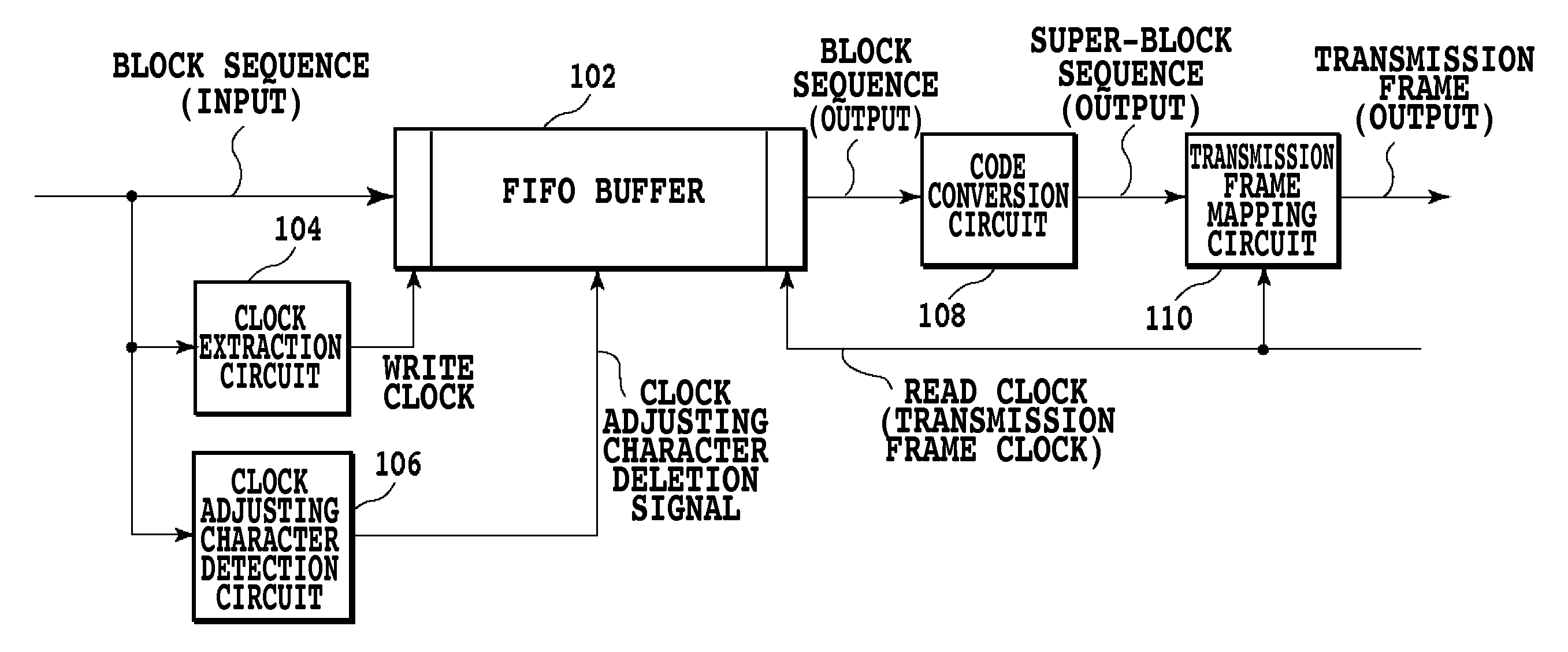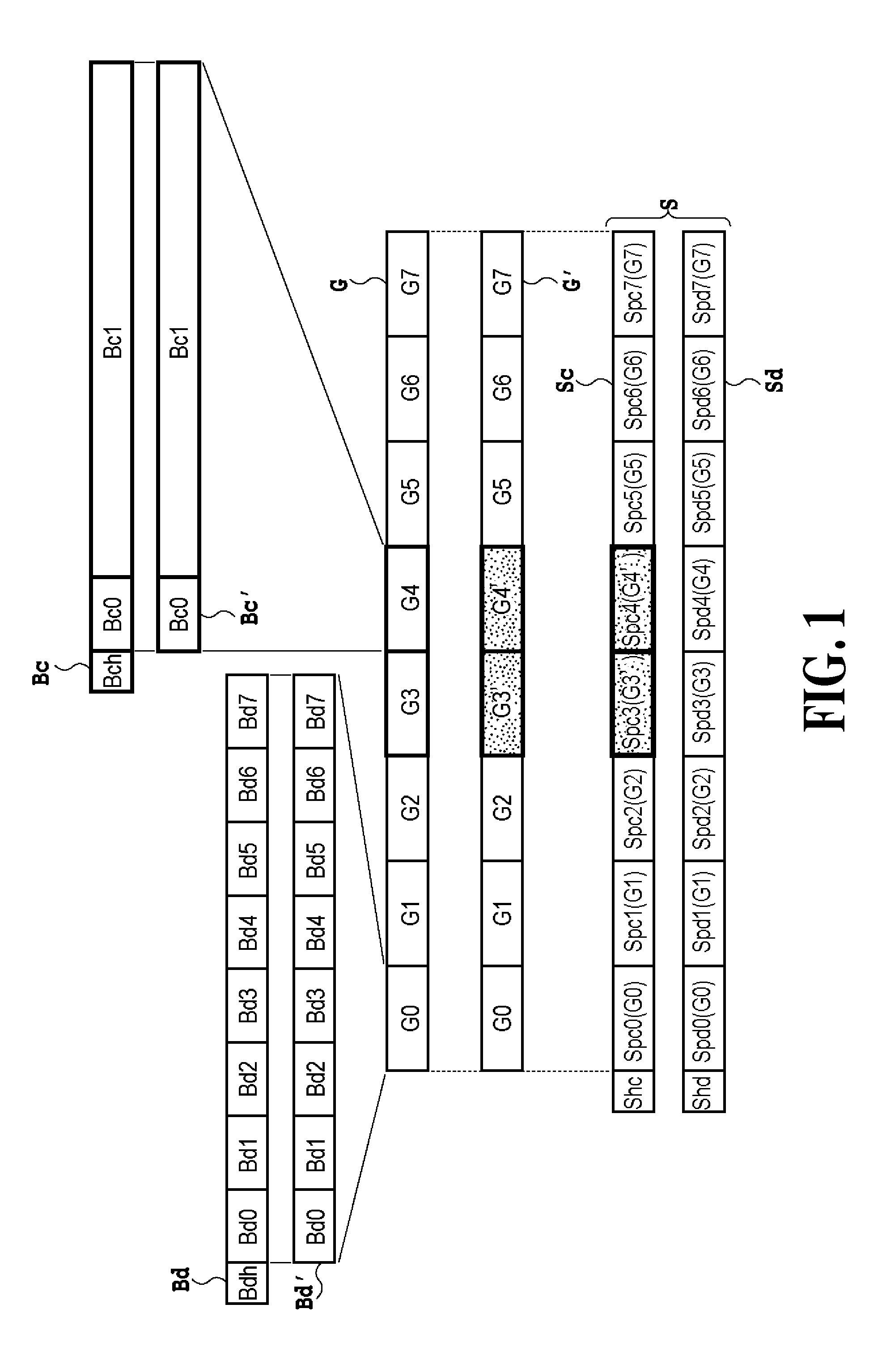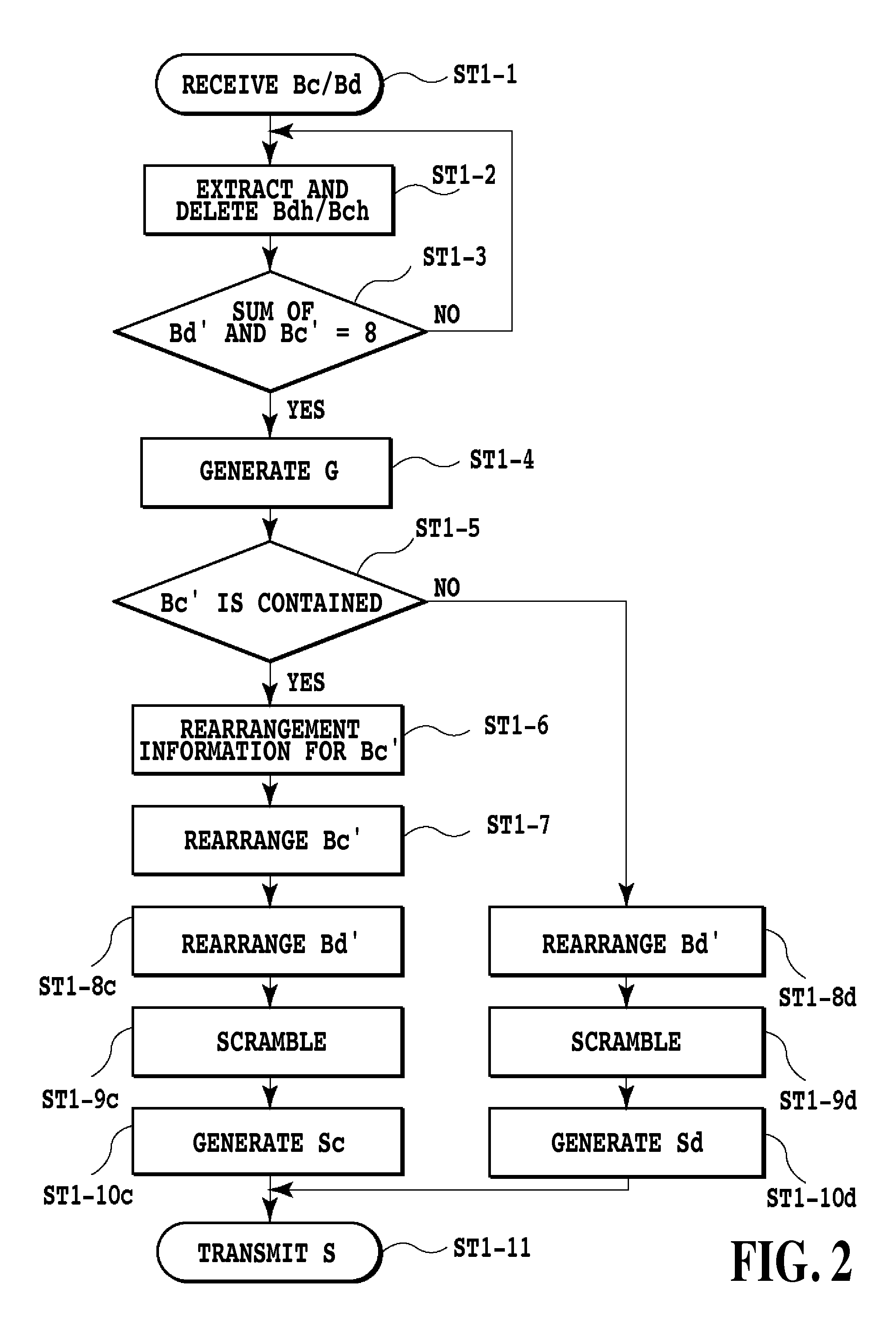Signal block sequence processing method and signal block sequence processing apparatus
a signal block sequence and processing method technology, applied in the field of signal block sequence processing methods and signal block sequence processing apparatuses, can solve the problems of inability to transfer signals of users utilizing ifg and pr for their own purposes on otn, lack of compatibility of direct mapping schemes, and inability to standardize direct mapping schemes, so as to improve error robustness, improve clock speed, and reduce bit rate
- Summary
- Abstract
- Description
- Claims
- Application Information
AI Technical Summary
Benefits of technology
Problems solved by technology
Method used
Image
Examples
first embodiment
[0129]As described above, according to the present invention, a signal block composed of a signal block payload and a signal block header is processed, and the resultant super-block is output. In the series of processes, signal block headers are deleted to reduce the bit rate at which the super-block is transmitted. Furthermore, according to the present invention, the super-block is processed, and the signal block on which the super-block is based is output.
[0130]A first embodiment of the present invention will be described with reference to the drawings.
[0131]FIG. 1 is a diagram schematically showing how signal blocks are processed. In FIG. 1, a signal block payload in which data is contained (in the specification, this signal block payload is referred to as a data block payload) is denoted by Bd′. A signal block payload in which a control code is contained (in the specification, this signal block payload is referred to as a control block payload) is denoted by Bc′. Furthermore, a ...
second embodiment
[0185]As described above, according to the present invention, a sequence of signal blocks each composed of a signal block payload and a signal block header is input and processed, and the resultant super-block is output. In the series of processes, signal block headers and a part or the whole of each signal block payload composed only of clock adjusting characters are deleted to reduce the bit rate at which the super-block is transmitted. Furthermore, according to the present invention, an input super-block is processed, and the signal blocks based on which the super-block has been generated are output (restored).
[0186]A second embodiment of the present invention will be described below with reference to the drawings.
[0187]FIG. 15 is a diagram schematically showing how signal blocks are processed. In FIG. 15, an input sequence of signal blocks is denoted by B. A signal block payload in which data is contained is denoted by Bd′. A signal block payload in which a control code is conta...
third embodiment
[0253]As described above, according to the present invention, the receiving side receives a super-block generated by the transmitting side and checks all the pieces of position determination information provided in control block payloads in the super-block payloads, for duplication. The receiving side further detects possible errors by determining whether or not a predetermined condition is met, using all the block type values contained in the control block payloads in the super-block payloads. This prevents errors from being propagated. Embodiments of the present invention will be described below with reference to the drawings.
PUM
 Login to View More
Login to View More Abstract
Description
Claims
Application Information
 Login to View More
Login to View More - R&D
- Intellectual Property
- Life Sciences
- Materials
- Tech Scout
- Unparalleled Data Quality
- Higher Quality Content
- 60% Fewer Hallucinations
Browse by: Latest US Patents, China's latest patents, Technical Efficacy Thesaurus, Application Domain, Technology Topic, Popular Technical Reports.
© 2025 PatSnap. All rights reserved.Legal|Privacy policy|Modern Slavery Act Transparency Statement|Sitemap|About US| Contact US: help@patsnap.com



